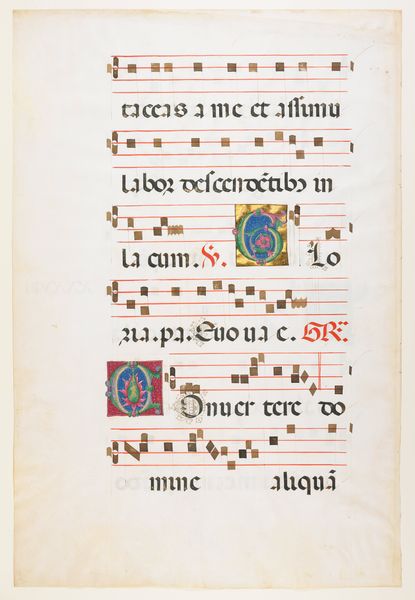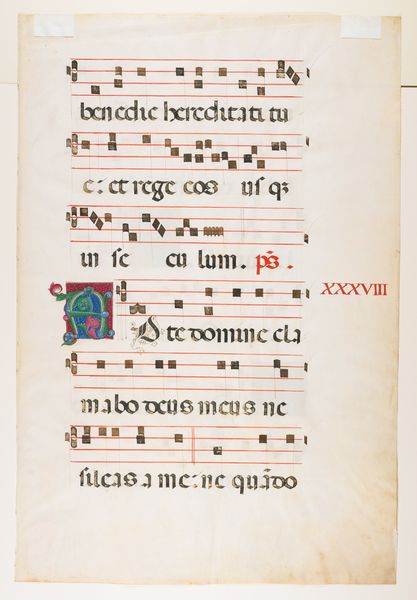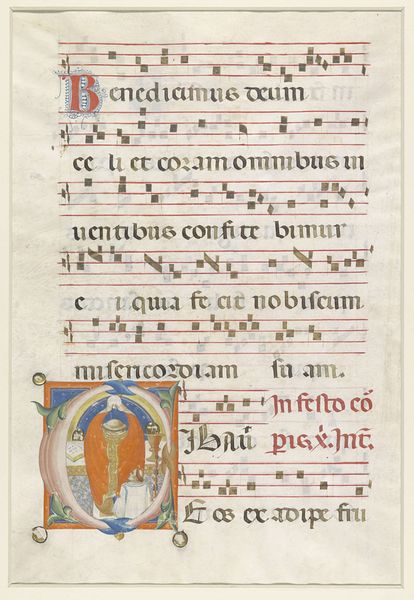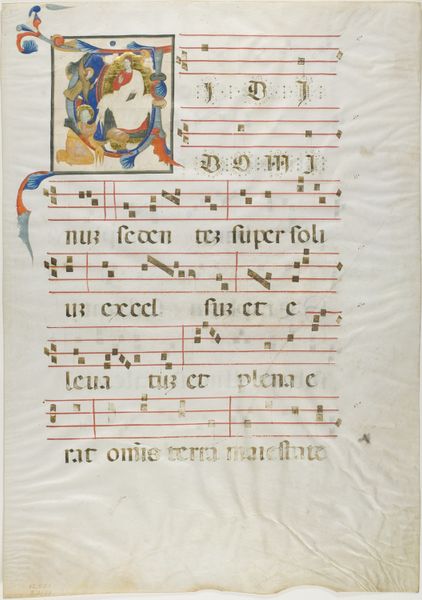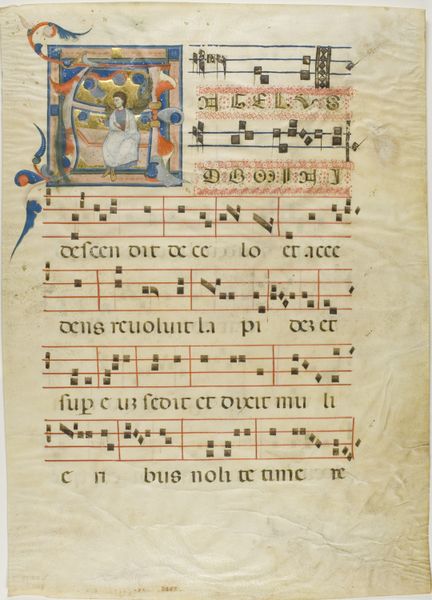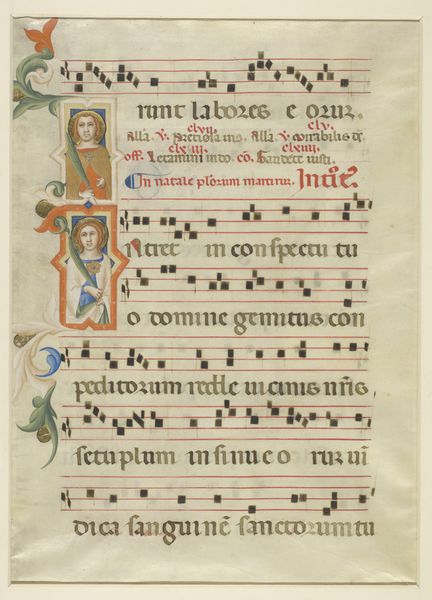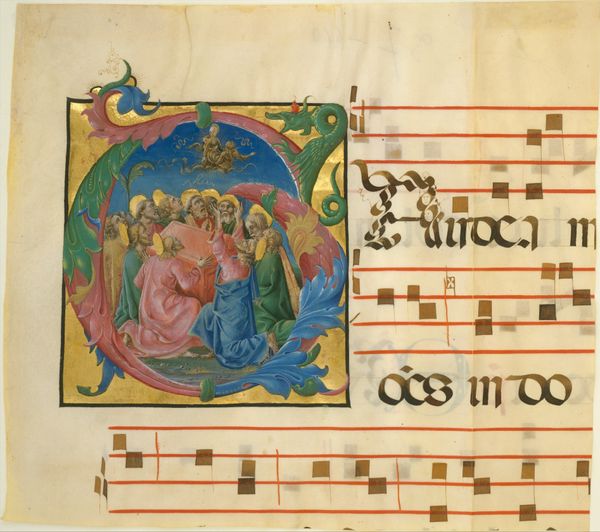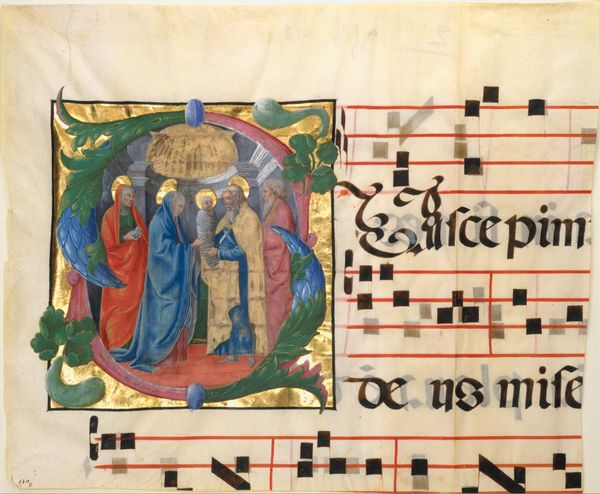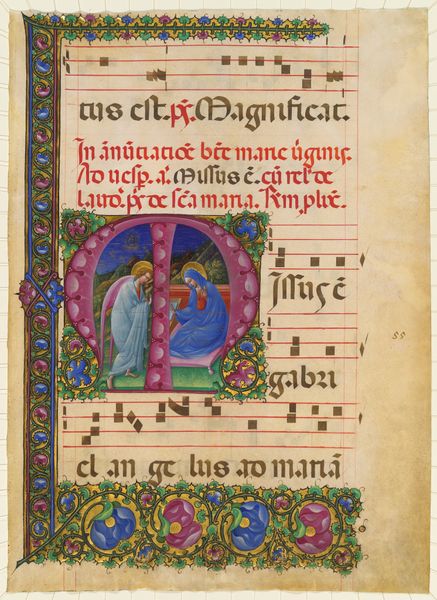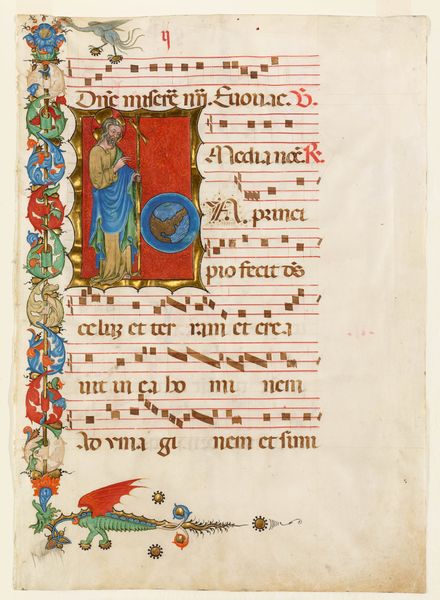
Joseph and his Brothers at the Well, Initial V from an Antiphonary 1310 - 1315
0:00
0:00
drawing, tempera, print, ink
#
drawing
#
medieval
#
tempera
# print
#
ink
#
coloured pencil
#
miniature
Dimensions: 140 × 130 mm (initial); 545 × 386 mm (sheet)
Copyright: Public Domain
Editor: Here we have "Joseph and his Brothers at the Well, Initial V from an Antiphonary," created around 1310-1315 by Neri da Rimini. It combines ink, tempera, and drawing elements. I find the miniature scene quite striking despite its small scale, especially knowing it comes from a larger book of chants. How do you interpret this work? Curator: This miniature is far more than decorative; it is a powerful condensation of a complex narrative deeply embedded in patriarchal power structures. The story of Joseph, sold into slavery by his brothers, is fraught with themes of jealousy, betrayal, and ultimately, the consolidation of power. How does its original function, adorning a book of religious music, influence our reading of that narrative today? Editor: I guess I hadn't considered the performative aspect. The chant underscores the inherent drama? Curator: Precisely. The very act of chanting these stories reinforces societal norms, potentially naturalizing Joseph's eventual dominance. Consider also how such depictions, circulated widely, shaped societal perceptions of sibling rivalry, justice, and even divinely ordained hierarchies. Does the style—the seemingly naive rendering—make that harder or easier to see, do you think? Editor: I see your point. Perhaps the seemingly innocent style could subtly mask the problematic themes within. I hadn’t initially considered its implications within larger social and power structures. Curator: It's a reminder that art, even in seemingly religious contexts, is never neutral. We must always be critical of the power dynamics it reflects and reinforces. Editor: That definitely gives me a new perspective. Thanks for pointing that out!
Comments
No comments
Be the first to comment and join the conversation on the ultimate creative platform.
